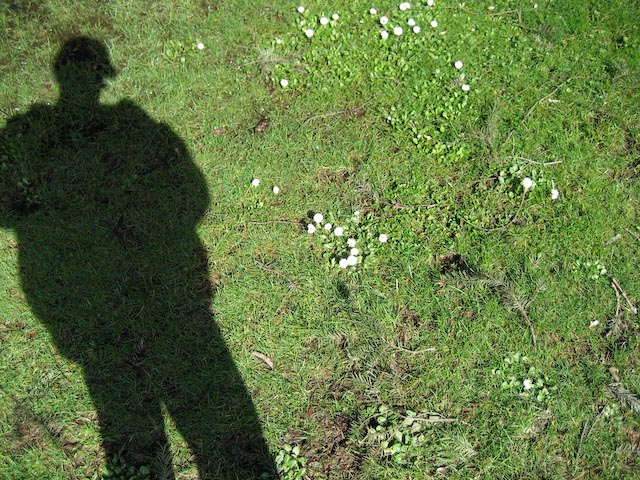Photography Shifts to Data
 Sunday, August 15, 2010 at 9:16AM
Sunday, August 15, 2010 at 9:16AM (Please see comments link below. Two very interesting responses to this entry.)
The average digital camera owner has over 5,000 photos in various libraries, which in the digital age is a rather quaint name for data that cannot be cataloged using conventional means. Even a Flickr library is about editing time, that is organizing sequences, blocking out events and arranging photographs so that some sort of story can be told. But, this is a different activity from creating a photo album and is closer to a scrapbook.

All this material is grist and fodder for even more complex social networks that can be accessed through mobile means and at home. Links become a crucial part of all this, but where does aesthetics end up? That perhaps is the key question because networks are only partially visible to those who use them and data is only that, information. The raw nature of information means that "editing" is now an activity of time management — the time needed to organize material and content — the development of typologies and catalogs to organize content, not only when photos were taken but superimposed Google maps to show location even though geography may not be that significant to the photograph and its look.
Photos are defined more by connections than by their individual nature, more by their virtual location on Facebook than by their links to events in real time. Photos move along a continuum from events to their classification and from there to screen-based albums, folders and projects. They are rarely printed.
 Data,
Data,  New Media in
New Media in  Networks,
Networks,  New Media,
New Media,  Photography
Photography 


Reader Comments (2)
Ron,
Very interesting points you bring up. As with everything else affected by the "digital revolution" in the past couple of decades, photography has become less of an activity where the hobbiest or casual layman has to be discriminating about when, how and where to snap a shot.
Much like how music is a ubiquitous "consumable" with meta-data attached to every track in a persons MP3 library, photography is now coming to the point where services and technology are helping the digital photographer automatically tag, organize and categorize photos. Integrating GPS with a camera tags a specific spot on the globe and face recognition in iPhoto tags "known" people for the user.
Unfortunately, much like music, the days of scrutinizing and actively consuming the media are becoming a thing of the past ... You don't see many people sitting down to listen to an entire album on a HiFi system while absorbing the album art and liner notes. Nor do people go beyond the point-click-transfer-select-upload-comment cycle with photography.
It'll be interesting to crystal-ball this topic and imagine how all this technology and media will evolve and possibly converge. How will technology be able to assist in gathering, cataloguing and cross-referencing a persons life in the years to come? Blogs, photos, video, music, audio, current events, point-in-time locations ...
Very interesting thoughts
I am grappling with this problem now. Got a gorgeous new camera - my first foray into digital. Takes beautiful pictures. But I am so obsessive that I can easily take 600 pictures a day. And that is with some restraint. I don't know what to do with them. The only thing that has ever limited me is cost and actual materials present. Even with film, if I found a subject intriguing I could easily run through several rolls in a few minutes. Sometimes it was months before I could afford to develop them, and with that there often came the joy of surprise, of having no recollection of what had been shot and then being re-met by the image in another context. There was the finality of it too - no redos - no fussing and playing - the moment was completely passed. If a photograph was good it stood on its own. If not, it was over and there was no revisiting possible. I like the simplicity of that. And kind of the honesty of it - you get it or you don't, in one instant, and you move on. That instantaneousness is part of its value to me - as image and process - the frozen moment. Time held still, where you can really look into it, for as long as you want. What does the moment say, the single frame, frozen? But there is no frozen moment with digital. The first 3 shots are just to get the exposure right. You are fussing, seeing and redoing, back and forth, adjusting. There is nothing singular. It's no longer a frozen moment of time, that you can look into for all of eternity if you want to, but a sequence. Somehow the sequence tells less, arrests me less. This is not to say that in sequencing the image loses power, but perhaps as a norm, the photograph does. Certainly it loses some of its iconic nature.
And then when you get them home, my god. It takes so much more time to go through them than it did to take them, a whole other round of decision making. This is why my brother calls digital photography "digital art" and not "photography." One upside is that though photographs are rarely printed these days, we see them larger on the screen than we usually did in print, especially adjusted for our proximity to our screens. Still, I miss the stuff of the printed photograph, the material, looking into it.
Anyway, I haven't figured out a process that suits me and the equipment yet. I think what I will do with this beautiful new camera is use it for specific situations - it's great for indoors and makes sense in journalistic contexts. And use my others when I have time for beauty.